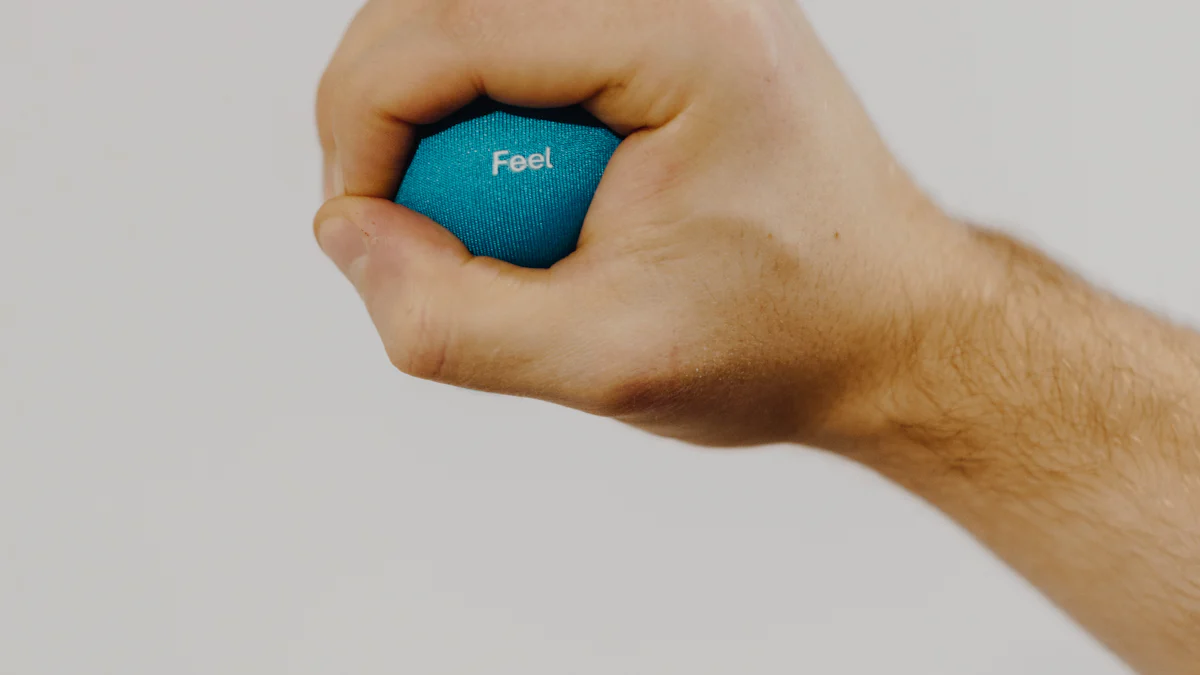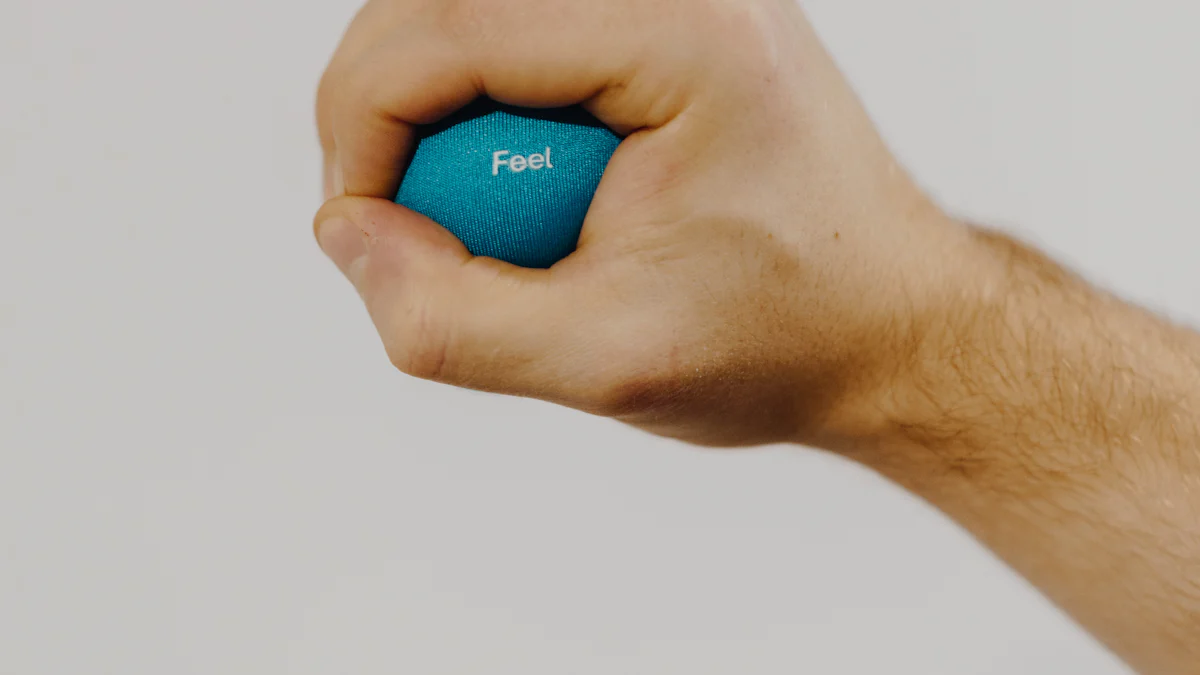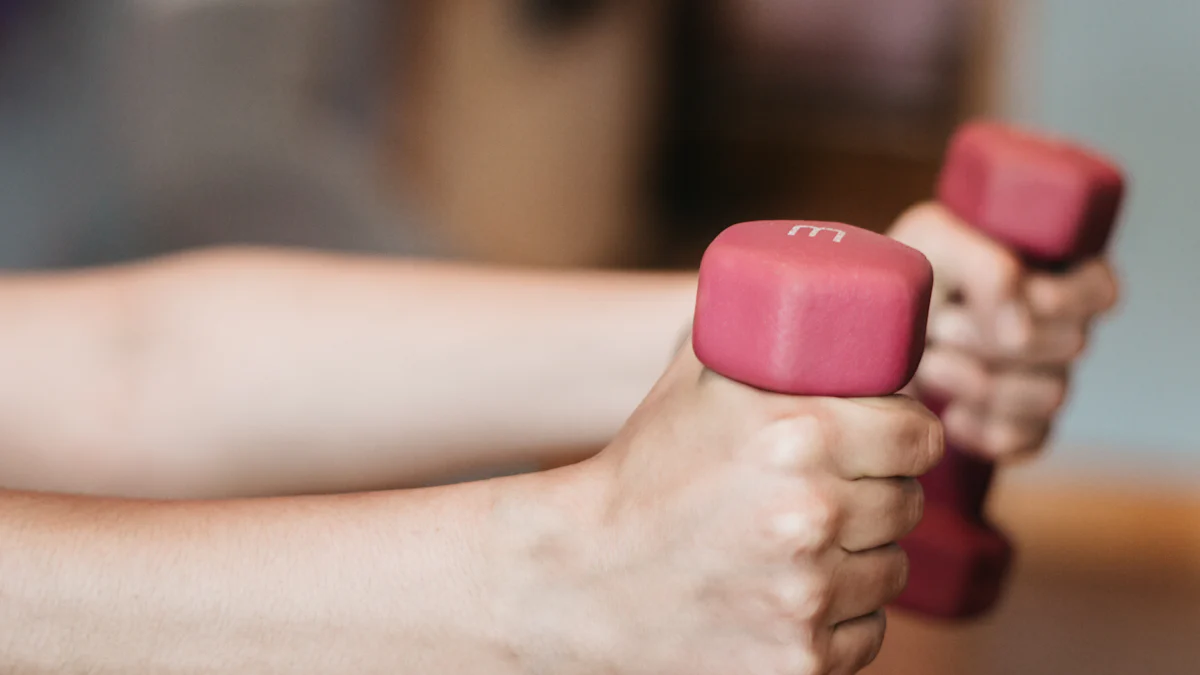
Hand exercise tools play a crucial role in therapy. These tools help improve hand strength, flexibility, and dexterity. Common hand exercise tool options include hand grippers, therapy putty, finger stretchers, and hand strengthening balls. Studies show a 30% increase in grip strength with regular use of these tools. Elderly participants also experienced significant gains in arm and hand strength. This blog aims to educate readers on the effective use of these tools for optimal hand health.
Understanding Hand Exercise Tools

Types of Hand Exercise Tools
Hand Grippers
Hand exercise tools like hand grippers help improve grip strength. Users place one handle against the palm and wrap fingers around the other handle. Squeezing the handles together strengthens the muscles in the hand. Regular use of hand grippers can lead to a significant increase in hand strength.
Therapy Putty
Therapy putty serves as another effective hand exercise tool. This putty comes in various resistance levels. Users can perform different exercises by stretching, squeezing, or rolling the putty. These exercises enhance hand flexibility and dexterity. Adjusting the resistance level allows for gradual improvement in hand strength.
Finger Stretchers
Finger stretchers target the extensor muscles in the hand. Users place loops over each finger and thumb. Spreading the fingers apart against the resistance strengthens these muscles. Finger stretchers also help improve finger flexibility. Consistent use can aid in rehabilitation from injuries.
Hand Strengthening Balls
Hand strengthening balls offer another versatile hand exercise tool. Users can perform squeezing exercises to build grip strength. Rotational exercises with these balls enhance wrist flexibility. These balls also provide relief from joint pain and stress. Hand therapy ball exercises benefit individuals with conditions like arthritis or stroke.
Benefits of Using Hand Exercise Tools
Improved Hand Strength
Hand exercise tools significantly improve hand strength. Regular use of hand grippers, therapy putty, and hand strengthening balls targets different muscle groups. This leads to stronger hands and better grip.
Enhanced Flexibility
Using hand exercise tools enhances hand flexibility. Therapy putty and finger stretchers improve the range of motion in the fingers and wrists. Increased flexibility helps in performing daily tasks more efficiently.
Pain Relief
Hand exercise tools provide relief from hand and joint pain. Squeezing and stretching exercises with these tools alleviate stiffness. This makes them beneficial for individuals with arthritis or carpal tunnel syndrome.
Rehabilitation from Injuries
Hand exercise tools play a crucial role in rehabilitation. Patients recovering from hand injuries or surgeries use these tools to regain strength and function. Exercises with therapy putty, finger stretchers, and hand strengthening balls aid in the recovery process.
How to Use Hand Exercise Tools

Hand Grippers
Proper Grip Technique
Hand grippers require a specific technique for effective use. Place one handle against the palm and wrap the fingers around the other handle. Squeeze the handles together using the muscles in the hand. Hold the closed position for five seconds, then slowly release the grip. Ensure that the movement remains smooth and controlled.
Recommended Repetitions and Sets
For beginners, start with three sets of 10 repetitions. Gradually increase the number of sets and repetitions as strength improves. Allow rest days between sessions to let the muscles recover. Consistent practice leads to significant gains in grip strength.
Therapy Putty
Different Exercises with Therapy Putty
Therapy putty offers various exercises to enhance hand strength and flexibility. Some effective exercises include:
- Squeezing: Form a ball with the putty and squeeze it with the entire hand.
- Pinching: Pinch the putty between the thumb and each finger individually.
- Rolling: Roll the putty into a snake-like shape using the fingers.
These exercises target different muscle groups in the hand.
Adjusting Resistance Levels
Therapy putty comes in different resistance levels. Start with a softer putty if new to hand exercises. Gradually move to firmer putty as strength increases. Adjusting resistance levels ensures continuous improvement and prevents plateauing.
Finger Stretchers
Stretching Techniques
Finger stretchers focus on the extensor muscles. Place loops over each finger and thumb. Spread the fingers apart against the resistance of the bands. Hold the stretched position for a few seconds before returning to the starting position. Repeat this exercise to enhance finger flexibility and strength.
Frequency of Use
Use finger stretchers three to four times a week. Consistent use aids in rehabilitation from injuries and improves overall hand function. Avoid overuse to prevent strain on the muscles. Regular practice leads to noticeable improvements in hand dexterity.
Hand Strengthening Balls
Squeezing Exercises
Hand strengthening balls provide an effective way to build grip strength. Users should start by holding the ball in one hand. Squeeze the ball firmly using the entire hand. Maintain the squeeze for about five seconds. Slowly release the grip and relax the hand. Repeat this exercise for 10 to 15 repetitions per hand.
Scientific Research Findings:
- A study published in the Fit Beast Club journal found a 30% increase in grip strength with regular use of hand grip strengtheners.
- Another study in the Scientific Research Article journal highlighted that elderly participants experienced significant gains in hand and arm strength through consistent use of rubber balls.
Rotational Exercises
Rotational exercises with hand strengthening balls enhance wrist flexibility. Hold the ball in one hand. Rotate the wrist in a circular motion while gripping the ball. Perform 10 rotations clockwise and then 10 counterclockwise. Switch to the other hand and repeat the process.
These exercises not only improve wrist flexibility but also aid in pain relief. Individuals with conditions like arthritis or carpal tunnel syndrome can benefit greatly from these exercises. Occupational therapists often recommend these exercises for rehabilitation purposes. Regular practice leads to noticeable improvements in hand function and overall strength.
Advanced Tips for Maximizing Benefits
Combining Tools for Comprehensive Therapy
Creating a Balanced Routine
A balanced routine ensures comprehensive hand therapy. Combine different hand exercise tools to target various muscle groups. For example, use hand grippers for grip strength and therapy putty for flexibility. Rotate between finger stretchers and hand strengthening balls. This approach prevents overuse of specific muscles.
Steps to Create a Balanced Routine:
- Identify Goals: Determine specific goals like improving grip strength or enhancing flexibility.
- Select Tools: Choose appropriate hand exercise tools based on goals.
- Schedule Sessions: Allocate time slots for each tool. For instance, use hand grippers on Mondays and Wednesdays, and therapy putty on Tuesdays and Thursdays.
- Rest Days: Include rest days to allow muscle recovery. Avoid consecutive days of intense exercises.
Tracking Progress
Tracking progress helps monitor improvements and adjust routines. Use a journal or app to record exercises, repetitions, and sets. Note any changes in hand strength or flexibility. Regularly review progress to stay motivated.
Tips for Effective Tracking:
- Set Benchmarks: Establish initial benchmarks for grip strength and flexibility.
- Weekly Updates: Update progress weekly to observe trends.
- Adjust Goals: Modify goals based on progress. Increase resistance levels or repetitions as needed.
Incorporating Hand Exercises into Daily Routine
Practical Tips for Consistency
Consistency is key to maximizing benefits. Integrate hand exercises into daily activities. Perform squeezing exercises with hand strengthening balls while watching TV. Use therapy putty during breaks at work.
Practical Tips for Consistency:
- Set Reminders: Use phone alarms or sticky notes as reminders.
- Pair with Activities: Combine exercises with routine activities. For example, use finger stretchers while reading.
- Keep Tools Accessible: Place hand exercise tools in visible locations. This encourages regular use.
Setting Realistic Goals
Realistic goals ensure steady progress without causing strain. Start with achievable targets and gradually increase intensity. For instance, begin with three sets of 10 repetitions for hand grippers. Gradually move to four sets as strength improves.
Steps to Set Realistic Goals:
- Assess Current Strength: Evaluate current hand strength and flexibility.
- Define Short-term Goals: Set short-term goals like increasing repetitions by 10% in two weeks.
- Plan Long-term Goals: Establish long-term goals such as achieving a specific grip strength in six months.
- Monitor and Adjust: Regularly assess progress and adjust goals accordingly.
“Hand therapy ball exercises for stroke patients enhance grip strength and improve fine motor skills,” according to a study on hand therapy. This demonstrates the effectiveness of consistent practice.
Incorporating these advanced tips will maximize the benefits of hand exercise tools. A balanced routine, consistent practice, and realistic goals lead to significant improvements in hand strength and flexibility.
Hand exercise tools play a vital role in therapy. These tools improve hand strength, flexibility, and dexterity. Regular use of hand grippers, therapy putty, finger stretchers, and hand strengthening balls offers significant benefits.
“Stretching, gripping, and releasing hand therapy exercises are essential for treating patients with arthritis, stroke, carpal tunnel syndrome, and other hand disorders,” according to therapists at In Touch NYC Physical Therapy.
Incorporating these tools into therapy routines enhances recovery and overall hand health. Consistent practice leads to optimal hand strength and function. Prioritize hand exercises for better mobility and stability.
See Also
Top Tips for a Warm and Cozy Winter Season
Discovering Diverse Sock Options for Both Genders
